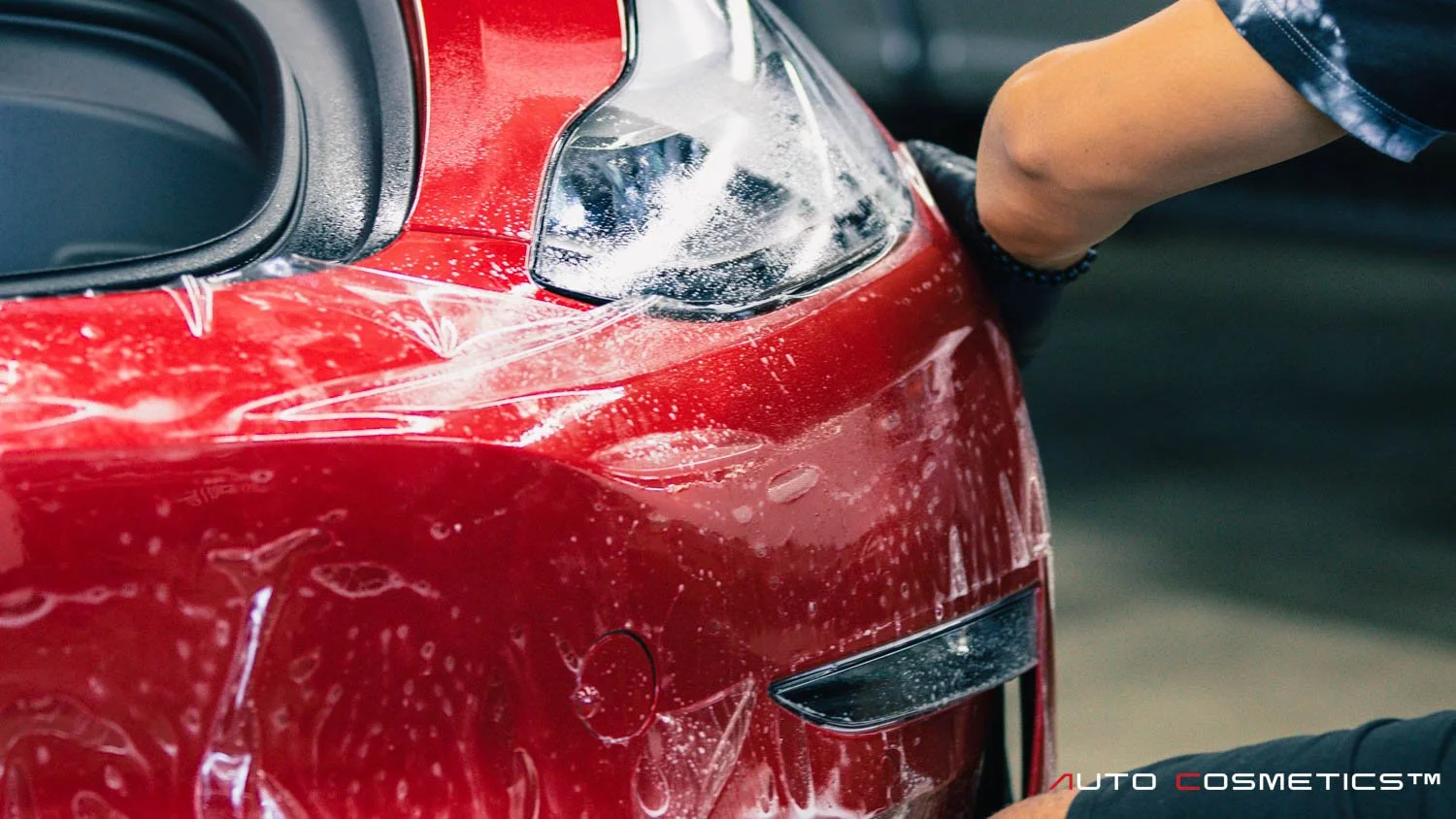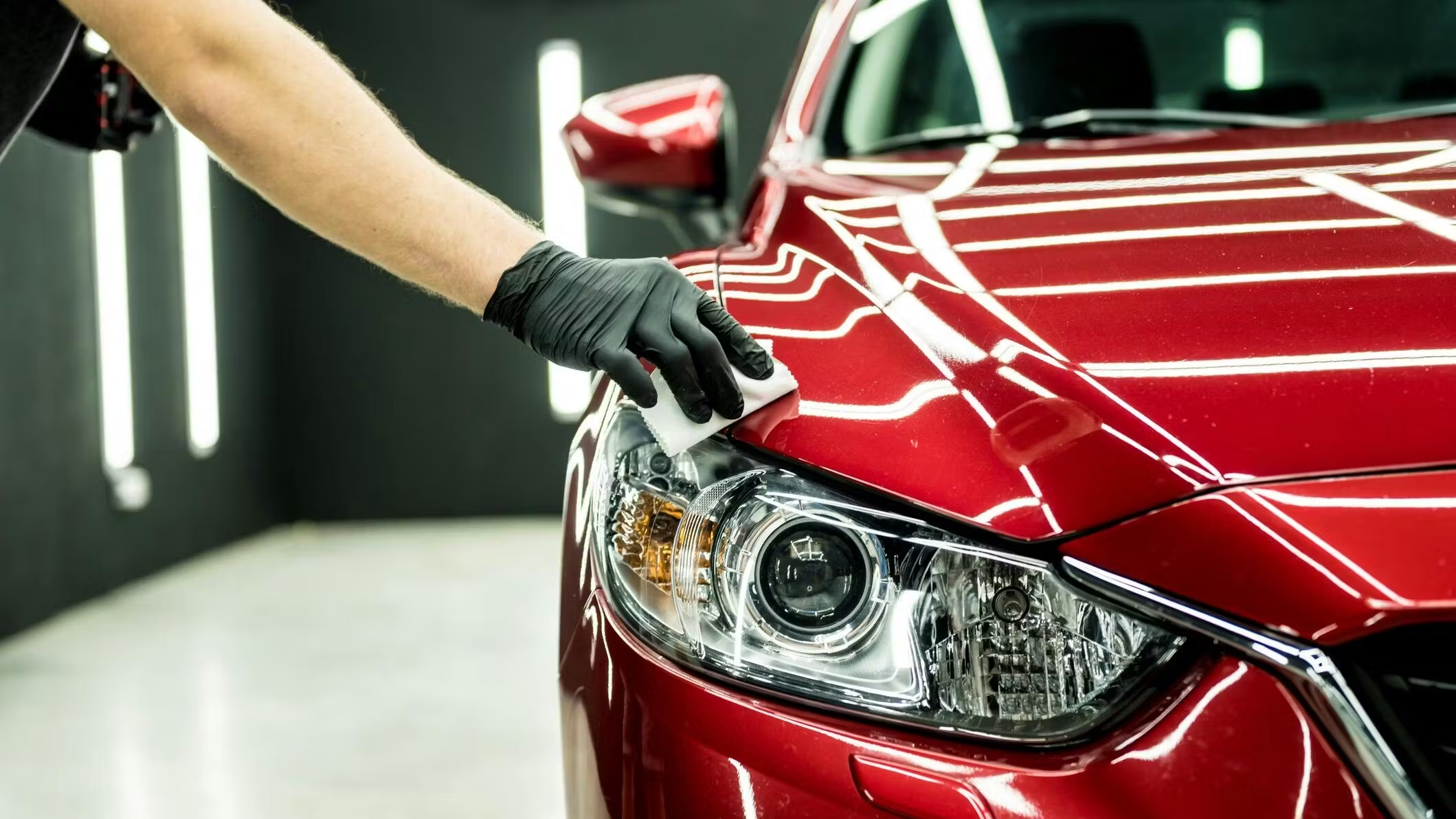Comprehending the Various Sorts Of Paint Protection Available for Cars
Browsing the myriad of paint security options for lorries can be a daunting yet crucial job for cars and truck owners aiming to protect their financial investment's look and value. From the acquainted regimen of applying typical wax to sophisticated options like ceramic finishes and paint defense films, each method offers one-of-a-kind benefits and obstacles.
Standard Wax
Traditional wax continues to be a prominent choice for car fanatics seeking to shield their car's paintwork. Respected for its ability to boost the aesthetic appeal of vehicle finishes, typical vehicle wax typically includes natural active ingredients, such as carnauba wax, beeswax, and various oils. These elements are combined to create an item that supplies a deep, glossy sparkle, accentuating the shade and depth of a vehicle's paint.
When applied, typical wax creates a sacrificial layer that guards the paint from environmental pollutants like dust, grime, and light UV exposure. Although it does not bond chemically with the paint surface area, as some modern options do, the wax's safety layer works in driving away water and preserving a tidy outside. This type of security normally needs routine reapplication to preserve its efficiency, as the lifespan of traditional wax is frequently limited to a few weeks or months, depending on environmental problems and car usage.
Application of typical wax is usually simple, including the application with an applicator pad and buffing to a high gloss. Despite developments in paint defense modern technology, typical wax continues to be a relied on choice for those valuing classic methods and visual appeals.
Paint Sealants
In comparison to typical wax, paint sealers use a longer-lasting service for protecting a car's paintwork. Generally formulated from artificial compounds, paint sealers are created to supply resilient protection versus environmental contaminants, UV rays, and minor abrasions. Unlike wax, which may require constant reapplication, a high-quality paint sealer can last anywhere from six months to a year, relying on driving problems and maintenance routines.
The application procedure for paint sealants is usually simple, requiring a tidy, completely dry surface for optimal adhesion. As soon as applied, sealants create a resistant barrier that improves the vehicle's gloss and depth of color, rivaling the visual appeal given by wax. Significantly, the artificial nature of sealants permits them to bond better with the automobile's surface, producing a more long-lasting guard.
Furthermore, paint sealers are especially advantageous for auto owners looking for to decrease maintenance time while optimizing protection. They use resistance to common problems such as water spots and chemical etching, making them a functional selection for those who often drive in rough weather conditions or navigate metropolitan settings. In general, paint sealants give a effective and effective ways of keeping a vehicle's appearance and resale worth.

Ceramic Coatings
While paint sealers give a superb degree of security and resilience, ceramic layers represent a significant development in automobile paint conservation. Ceramic layers are fluid polymers applied to a vehicle's exterior to develop a chemical bond with the existing paint (paint protection). This bond creates a safety layer that dramatically boosts the vehicle's resistance to environmental pollutants, such as UV rays, bird droppings, and acid rain
One of one of the most notable features of ceramic coatings is their hydrophobic residential properties. This high quality guarantees that water, along with dirt and grime, is properly repelled from the surface area, making the cars and truck much easier to keep and clean. Additionally, ceramic coatings supply a high-gloss surface, boosting the aesthetic charm of the car with a mirror-like shine.
Sturdiness is one more key benefit of ceramic finishings. Unlike traditional waxes or sealers that may call for constant reapplication, ceramic coverings can last numerous years with appropriate upkeep, using long-term security and value. The application procedure, however, calls for precision and proficiency, usually requiring professional installment for ideal outcomes. In summary, ceramic layers supply check my blog superior security, convenience of maintenance, and boosted visual charm, making them a recommended choice for vehicle enthusiasts looking for a high level of surface defense.

Paint Security Film
Several vehicle owners turn to Paint Protection Movie (PPF) as a reliable remedy for maintaining their lorry's exterior. This clear thermoplastic urethane film is thoroughly related to the painted surfaces of a car, offering a robust guard versus various ecological hazards. PPF masters protecting against rock chips, small abrasions, and the harmful effects of UV radiation, thus maintaining the car's beautiful appearance over time.
Among the crucial advantages of PPF is its self-healing residential properties. Minor scratches and swirl marks on the movie can disappear with direct exposure to warmth, such as sunlight or warm water, ensuring that the protective layer remains inconspicuous while keeping its efficiency. This technology not just improves the aesthetic appeal of the lorry however also adds to its resale value by reducing wear and tear.
PPF is also very customizable, permitting auto proprietors to select certain areas for defense, such as the hood, fenders, mirrors, or the entire vehicle. Specialist installation is advised to guarantee a smooth application and to avoid bubbles or imbalance (paint protection). Generally, Paint Protection Movie is an outstanding financial investment for automobile fanatics, using long-lasting defense and peace of mind
Contrasting Paint Protection Options
Auto owners regularly deal with the choice of choosing the official website most suitable paint protection alternative for their vehicles. The option frequently includes evaluating several popular approaches, including paint protection film (PPF), ceramic layers, and conventional wax. Each choice supplies unique benefits and factors to consider, necessitating a careful evaluation based upon private demands and expectations.
Paint security film, usually regarded as the most robust remedy, supplies a physical barrier that guards the automobile's surface from chips, scrapes, and environmental contaminants. In comparison, ceramic layers use a liquid polymer that chemically bonds with the vehicle's paint, supplying a glossy coating and durable defense against UV rays, chemicals, and minor scrapes (paint protection).
Standard wax, a time-honored alternative, offers a more affordable yet much less resilient type of defense. It offers a temporary guard versus pollutants and enhances the vehicle's luster. It requires constant reapplication to maintain its safety attributes.
Eventually, the choice rests on elements such as spending plan, preferred long life, and the level of security looked for, guiding cars and truck owners to the most suitable option.
Final Thought
The varied range of paint protection options available for vehicles serves different safety demands and budget plans, each offering special benefits. Paint sealants supply longer-lasting artificial defense. Repaint security movie supplies a robust barrier against physical damages.
Browsing the myriad of paint security choices for automobiles can be an overwhelming yet vital job for automobile owners aiming to maintain their financial investment's appearance and value.While paint sealers give a superb degree of protection and sturdiness, ceramic coverings stand for a substantial improvement in automobile paint preservation.Many car proprietors turn to Repaint Security Film read this (PPF) as a reliable option for preserving their car's exterior. In General, Paint Defense Movie is an excellent financial investment for car lovers, offering durable protection and tranquility of mind.
Cars and truck proprietors often face the choice of choosing the most ideal paint security alternative for their cars.